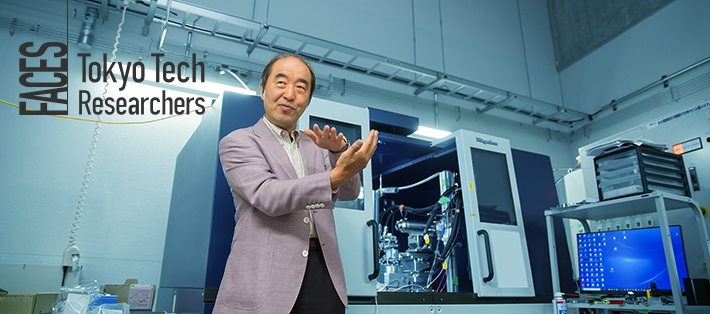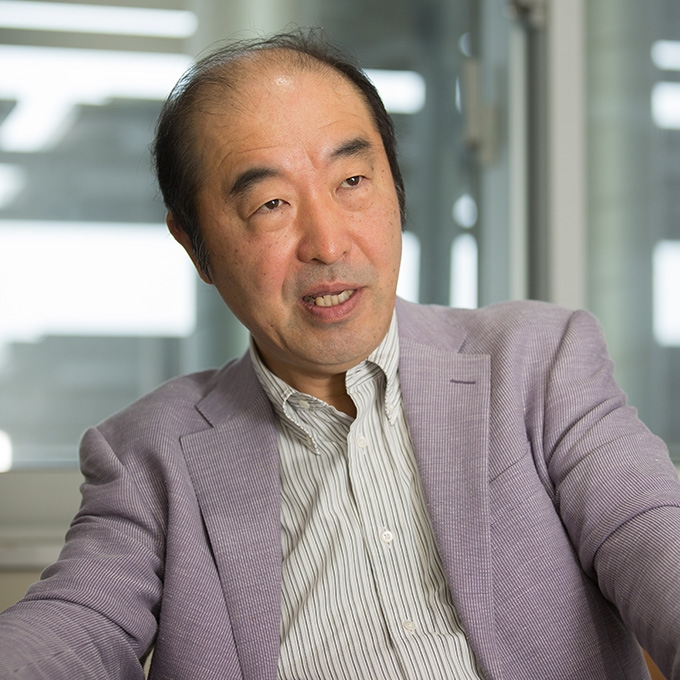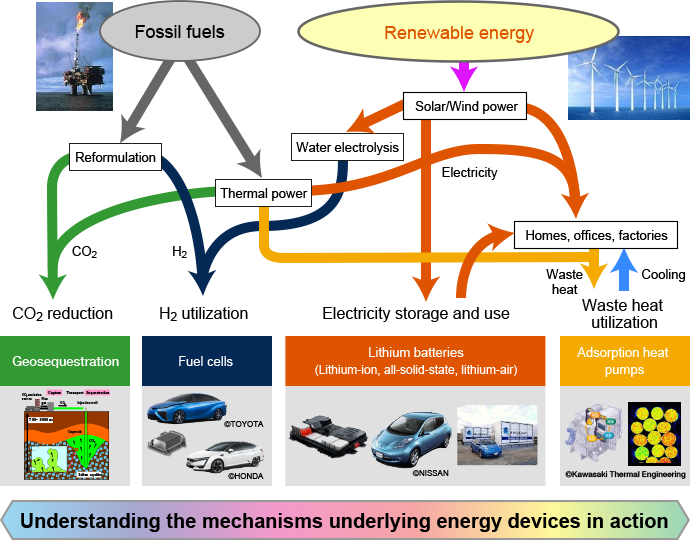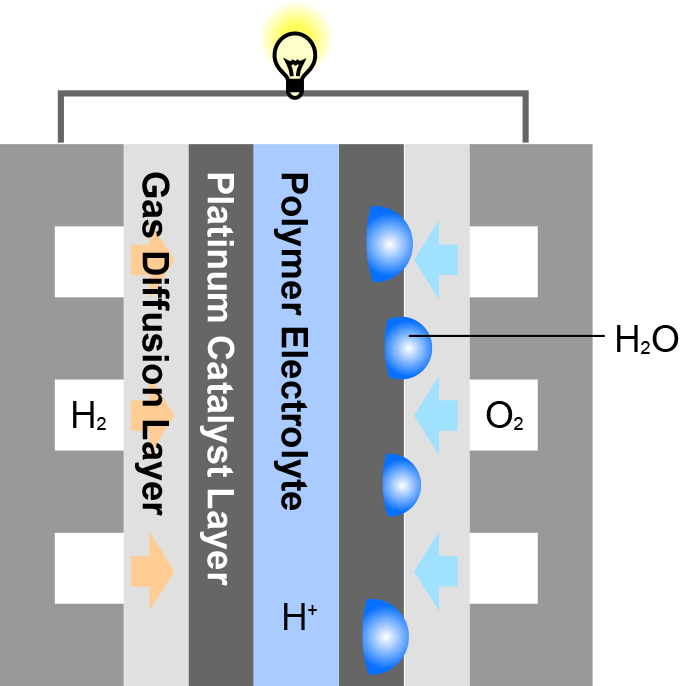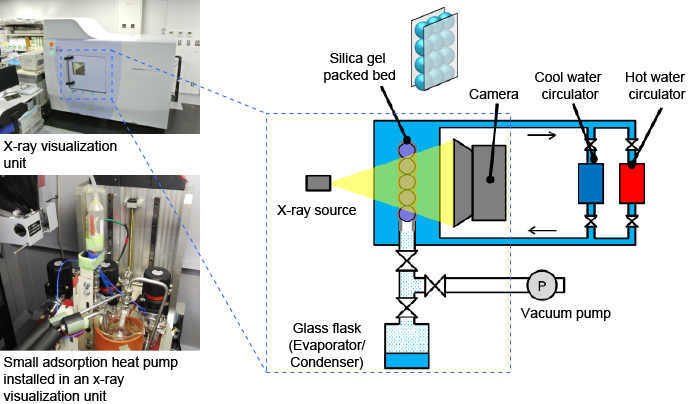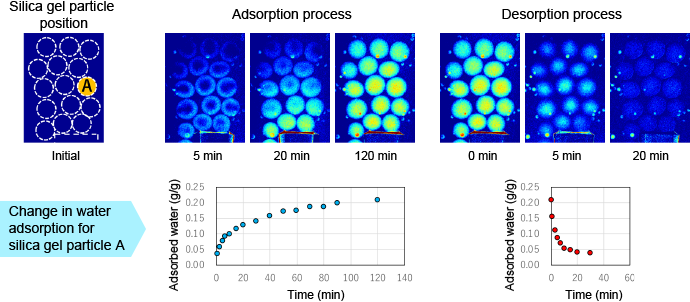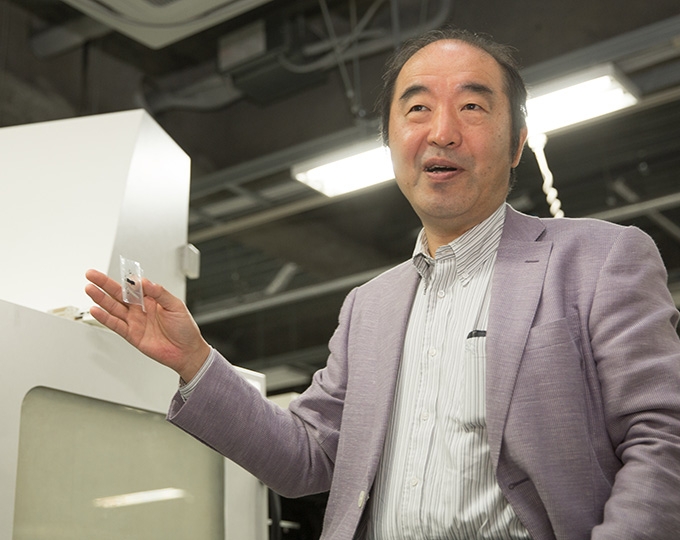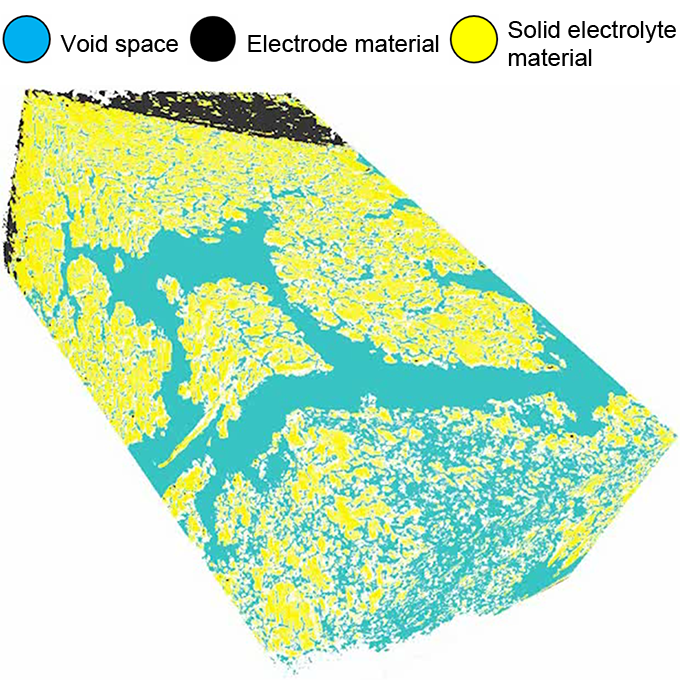
Using x-rays to visualize the interior of all-solid-state batteries and distinguish between electrode material, solid electrolyte material, and voids.
Hirai is now working on visualization of all-solid-state lithium-ion batteries ("all-solid-state batteries"). Instead of conventional liquid electrolytes, all-solid-state batteries employ solid electrolytes, which reduce the risk of fire and enable quick recharge. Development towards practical application has been actively pursued both domestically and abroad.
Because the material used is solid, however, lithium ion mobility is not as readily achieved as with liquid. "This prompted me to try using an x-ray CT unit to image the interior of the all-solid-state battery under development by our own Ryoji Kanno, a frontrunner in the field," says Hirai.
Extremely small voids running vertically, horizontally, and diagonally exist in electrodes and solid electrolytes, and these interfere with the mobility of lithium ions. We must reduce these voids as much as possible to allow lithium ions to move at high speeds. Hirai, however, sought to identify the optimum void size through real-time visualization. To do so, he applied pressure to the electrode and solid electrolyte materials.
"To observe the interior of the battery using x-rays, it was necessary to distinguish between electrode material, solid electrolyte material, and void space. Distinguishing between the electrolyte material and void space was quite difficult, but the staff and students in my lab rose to the challenge and, by tuning the apparatus, succeeded in achieving high-resolution visualization," explains Hirai.
This enabled the team to see that many microscale cracks occurred in the materials as a result of the way in which pressure was applied. They learned that these cracks limited lithium ion mobility and led to deterioration of performance. They also found that controlling pressurization conditions prevented cracks from occurring. "This breakthrough will certainly contribute to performance improvement and practical application of all-solid-state batteries," states Hirai.
. Any information published on this site will be valid in relation to Science Tokyo.


